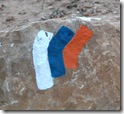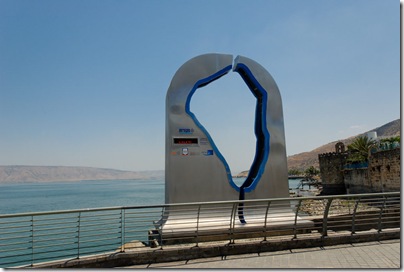The New York Times publishes an article on old news, Drudge links to it, and suddenly we have a sensational story that will “shake our basic view of Christianity.” Hold on a minute.
You can read the story in the NY Times, a copy at the International Herald Tribune, Haaretz, World Net Daily, and elsewhere. You could also have read about it a year ago in Haaretz, or read the article in Biblical Archaeology Review Jan/Feb 2008 issue. Why is it suddenly “news” now?
You can see photos of it at Haaretz, a large photo here, line drawing and transcription here (pdf), and an English translation here. You can also read the original journal article published in Cathedra here (in Hebrew; pdf).
Here’s a brief summary:
What: Three-foot tall stone inscribed in ink with 87 lines of Hebrew text describing a vision given by the angel Gabriel
When: The stone was written in the 1st century B.C. and it was discovered 8-10 years ago and sold by a Jordanian antiquities dealer to an Israeli-Swiss antiquities collector.
Where: It was found in the vicinity of the Dead Sea, possibly on the Jordanian side. Ada Yardeni: “You have got a Dead Sea Scroll on stone.”
Forgery?: Even though this was not uncovered in a legal excavation, scholars believe the inscription to be authentic.
The Sensational Claim: The end of the inscription mentions a messiah who would rise in 3 days. Since the text was written before Jesus’ resurrection, it explains how the story of Jesus’ resurrection came to be.
The Sensational Quotation: “Resurrection after three days becomes a motif developed before Jesus, which runs contrary to nearly all scholarship. What happens in the New Testament was adopted by Jesus and his followers based on an earlier messiah story” (Israel Knohl, professor of biblical studies at Hebrew University and proponent of this theory).
The Disputed Reading: “In three days you shall live, I, Gabriel, command you.”
Why Disputed: “There is one problem. In crucial places of the text there is lack of text. I understand Knohl’s tendency to find there keys to the pre-Christian period, but in two to three crucial lines of text there are a lot of missing words” (Moshe Bar-Asher, president of the Israeli Academy of Hebrew Language and emeritus professor of Hebrew and Aramaic at the Hebrew University).
Why This Matters:
Knohl said that it was less important whether Simon was the messiah of the stone than the fact that it strongly suggested that a savior who died and rose after three days was an established concept at the time of Jesus. He notes that in the Gospels, Jesus makes numerous predictions of his suffering and New Testament scholars say such predictions must have been written in by later followers because there was no such idea present in his day.
In other words, if the disputed reading is correct, this reveals that Jesus and/or his disciples did not create the story of his resurrection after three days, but rather they borrowed it from existing ideas.
Of course, it is either one or the other: they invented it or stole it. Here’s a radical idea: Jesus was raised by God from the dead after he had been in the tomb three days. Jesus expected this, which is why he predicted it. His disciples remembered it, which is why they recorded it.
The author of this theory, Israel Knohl, says that this stone “should shake our basic view of Christianity.” Several assumptions are required for this stone to be so significant:
1) Knohl’s disputed reading must be correct;
2) Knohl’s interpretation of the text overall must be correct;
3) Jesus and/or his disciples must have known about this text (or a similar one not yet attested to);
4) Jesus did not rise from the dead;
5) Jesus’ disciples were dishonest in claiming that he did rise from the dead and in attributing this idea to him from another source;
6) Jesus’ disciples were stupid in dying for a lie that they invented. Altogether, I think that these assumptions are shaky enough to suggest that Knohl is a little too optimistic about the impact of his theory.
UPDATE (7/8): I found the BAR article mentioned above online and added a link. For today’s articles and analysis on the story, see this post at Paleojudaica.
UPDATE (7/9): I can hardly do better than Paleojudaica with the latest stories, so I will not even try.
Note his choice for “inflated headline of the week.”

